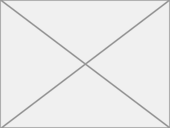Game Classification
Outland Housemarque Ltd., Ubisoft Entertainment SA (France), 2011
Classification
VIDEO GAMEKeywords
Market
This title is used by the following domains:- Entertainment
Audience
This title targets the following audience:Age : 12 to 16 years old / 17 to 25 years old
General Public
Gameplay
The gameplay of this title is Game-based(designed with stated goals)
The core of gameplay is defined by the rules below:
Similar games
Outland is a 2D platformer that combines mechanics from different games and genres, with fast and agile movement, a large variety of fighting tactics, a fairly open world where newly-acquired abilities urge the player to return to earlier areas and explore new paths, and colour-based gameplay that draws inspiration from bullet hell shooters. The game is set in a mystical world where a man needs to find the balance between two contradictory forces, which is also reflected in the gameplay.
The game is divided in five large worlds that are opened up gradually. At the start of the game the player's character is limited to basic movement: (wall) jumping, crouching, hanging on to ledges and a straightforward sword attack that can be turned into a combo. The focus is largely on taking out enemies to progress through the environment, usually through typical platformer elements such as ladders, ledges, climbing against walls, manipulating levers and switches, and crossing moving platforms. The environment is however immediately filled with paths that cannot be explored. They require abilities to break through stone floors, charge attacks to break through walls, activate jump pads, locate keys, or use teleporters. These are earned after fighting bosses and locating shrines. Once acquired, it is possible to return and explore further. The entire game is however fairly linear as abilities are usually granted at the time they are needed to progress. Another important puzzle mechanic involves bombs left behind by enemies that can be swung around to blow up opponents or break through walls. The character also gradually learns new moves such as slides, air attacks, an upwards slash, a powerful attack based on a limited amount of energy, spikes, and the ability to launch a massive laser beam. Attacks can be linked to form combos and launch opponents into the air to make them dizzy.
The most important game mechanic is a polarity system of two colours, blue (light) and red (dark), similar to games such as Ikaruga. After acquiring both powers, pressing a button changes the character to blue or red. This change of colour has different effects and often requires quick reflexes. Enemies can only be defeated when changing into the opposite colour or attacks do no damage. At the same time the environment is filled with lasers, balls and cannons that have the same two colours. For the environment the player needs to switch to the corresponding colour to absorb the beams and bullets, which becomes difficult when you need to take the enemies into account and different types of projectiles cross paths in large waves. In many sections and especially during the boss battles, the screen is filled with a large amount of objects that force the player to constantly switch colour while attacking. Changing colour can also affect the environment, raising or lowering spikes, or hiding and revealing platforms.
Progress can be tracked through a level map that shows the goals and all important items. While playing, a gush of wind carrying gold leaves shows the general direction at any time. The game is saved at checkpoints. Once the teleporter ability has been learned, it is possible to return to almost any environment in each of the worlds. While playing, the character gathers gold that is exchanged at statues to earn more health or energy, and green hearts restore general health. Many of the optional paths lead to secret areas that contain gold, health or hidden masks for the player to collect. These unlock bonuses such as concept art, but are otherwise optional.
The game contains an online cooperative game mode, arcade levels, and separate cooperative challenges unlocked through the singleplayer mode. [source:mobygames]
Distribution : Retail - Commercial
Platform(s) : Playstation 3 (PS3) - Xbox 360 (X360)
The game is divided in five large worlds that are opened up gradually. At the start of the game the player's character is limited to basic movement: (wall) jumping, crouching, hanging on to ledges and a straightforward sword attack that can be turned into a combo. The focus is largely on taking out enemies to progress through the environment, usually through typical platformer elements such as ladders, ledges, climbing against walls, manipulating levers and switches, and crossing moving platforms. The environment is however immediately filled with paths that cannot be explored. They require abilities to break through stone floors, charge attacks to break through walls, activate jump pads, locate keys, or use teleporters. These are earned after fighting bosses and locating shrines. Once acquired, it is possible to return and explore further. The entire game is however fairly linear as abilities are usually granted at the time they are needed to progress. Another important puzzle mechanic involves bombs left behind by enemies that can be swung around to blow up opponents or break through walls. The character also gradually learns new moves such as slides, air attacks, an upwards slash, a powerful attack based on a limited amount of energy, spikes, and the ability to launch a massive laser beam. Attacks can be linked to form combos and launch opponents into the air to make them dizzy.
The most important game mechanic is a polarity system of two colours, blue (light) and red (dark), similar to games such as Ikaruga. After acquiring both powers, pressing a button changes the character to blue or red. This change of colour has different effects and often requires quick reflexes. Enemies can only be defeated when changing into the opposite colour or attacks do no damage. At the same time the environment is filled with lasers, balls and cannons that have the same two colours. For the environment the player needs to switch to the corresponding colour to absorb the beams and bullets, which becomes difficult when you need to take the enemies into account and different types of projectiles cross paths in large waves. In many sections and especially during the boss battles, the screen is filled with a large amount of objects that force the player to constantly switch colour while attacking. Changing colour can also affect the environment, raising or lowering spikes, or hiding and revealing platforms.
Progress can be tracked through a level map that shows the goals and all important items. While playing, a gush of wind carrying gold leaves shows the general direction at any time. The game is saved at checkpoints. Once the teleporter ability has been learned, it is possible to return to almost any environment in each of the worlds. While playing, the character gathers gold that is exchanged at statues to earn more health or energy, and green hearts restore general health. Many of the optional paths lead to secret areas that contain gold, health or hidden masks for the player to collect. These unlock bonuses such as concept art, but are otherwise optional.
The game contains an online cooperative game mode, arcade levels, and separate cooperative challenges unlocked through the singleplayer mode. [source:mobygames]
Distribution : Retail - Commercial
Platform(s) : Playstation 3 (PS3) - Xbox 360 (X360)
 Français
Français English
English





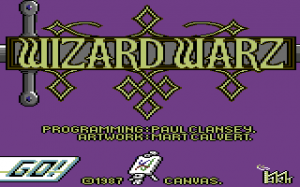
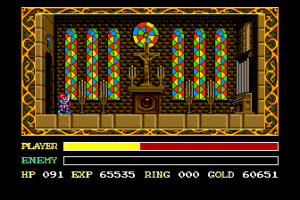
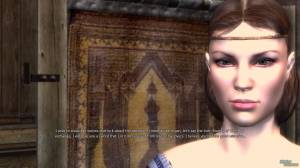
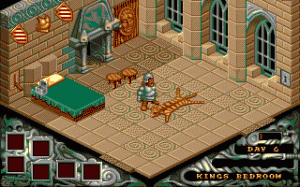
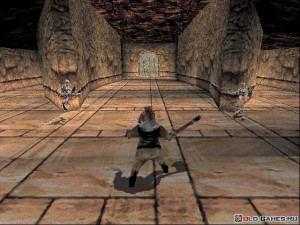
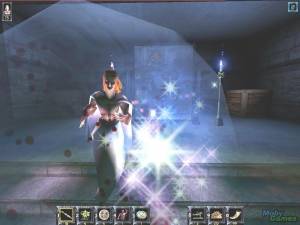
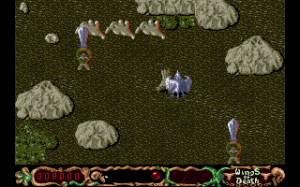
.png)
